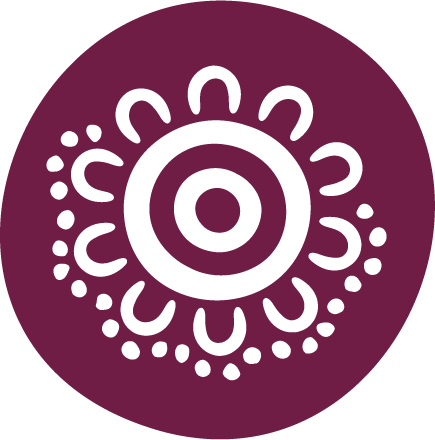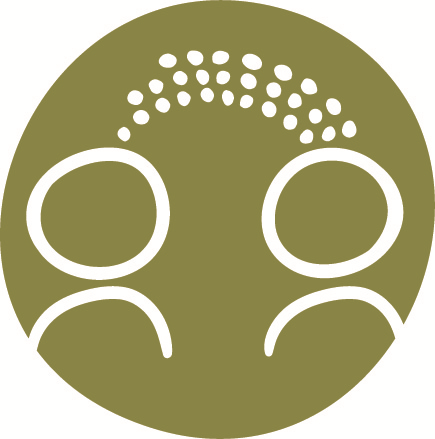Welcome to the Lowitja Institute Repository
This institutional research repository is for the work of the Lowitja Institute, Australia’s national Aboriginal and Torres Strait Research Institute. Our work focuses on the health and wellbeing of Aboriginal and Torres Strait Islander peoples and Indigenous peoples across the globe. This Repository tracks the research outputs of Lowitja Institute employees, funded researchers and scholars as well as showcases community-led Aboriginal and Torres Strait Islander health research.
Communities in the repository
Select a community to browse its collections.
Recent Submissions
Knowledge, attitude, and practice in communication assessment of speech-language pathologists working with adolescents with mental health concerns.
(2025-02-24) Wallis A.K.; Westerveld M.; McKenzie M.L
Purpose: The recovery model underlying mental health services emphasises the importance of the voice of the adolescent client in identifying needs, goals, and negotiating intervention. This study aimed to characterise speech-language pathologists’ (SLPs) knowledge, attitude, and practice in relation to communication assessment of adolescents, focusing on adolescents with mental health concerns and the use of discourse sampling and analysis.
Method: An online survey using a Knowledge, Attitude, Practice framework gathered data from 43 English-speaking SLPs. SLPs responded, using a five-point Likert scale, to closed statements regarding perceived knowledge, attitude, and practice in approaches to communication assessment. Survey items relating to discourse sampling and analysis were aggregated into subscales and six statements related to assessment of adolescents with mental health concerns. A final, open-ended question invited comments on changing clinical practice.
Result: A strong positive correlation was found between knowledge and practice; with a weak, positive correlation between knowledge and attitude.
Conclusion: SLPs are aware of the benefits of a comprehensive communication assessment. However, greater knowledge and experience is needed to incorporate more formalised approaches into clinical practice, especially as it relates to social and emotional outcomes. Participants’ comments suggest that professional learning communities may be helpful in delivering this outcome.
Reproductive injustice in action: The impact of the Supreme Court’s Dobbs decision on Indigenous and minority women.
(2025-03-05) Hill M.; Houghton F.; Keogh Hoss M.
The United States of America (USA) is a country founded upon an unholy trinity of genocide, slavery and ethnic cleansing. The impacts of this assault remain blatantly clear and can be seen across the whole country. A crucial insight into the state of USA society is afforded via its significant health inequities. Systemic and structural racism are widespread there, as are engrained racist attitudes and ideologies. One field in which this is particularly evident is maternal mortality. The racial dimensions of this iniquity are blatant and unacceptable. However, to compound an ongoing tragedy, the recent Supreme Court decision to roll back on abortion protections represents an assault that will have a highly disproportionate impact on Indigenous and minority pregnant women.
A community-led approach to understanding how service providers can support ‘ageing well’ for older Aboriginal people in Australia.
(2025-01-07) Jamieson S.K.; Spencer W.; Robinson V.; McCausland R.; Andersen M.; Macniven R.; Hickey V.; MacGillivray
Supporting older people to age well is a global policy priority,however the development and implementation of strategies tosupport ageing well for older Aboriginal people must be determined by the communities affected. This is necessary in colonial contexts, where socio-political structures impinge on Aboriginal rights and mainstream policy and practice creates and maintains health and social inequities. This article reports on research conducted in partnership with the Dharriwaa Elders Group, an Aboriginal Community Controlled Organisation. The research focus was how service provision can support Aboriginal people to age well in a remote community in New South Wales, Australia. Interviews were conducted with 11 staff members from health, aged care, and Aboriginal Community Controlled services. The analysis produced four themes: Ageing well is collective and a shared responsibility; Racism and discrimination are pervasive in mainstream services; Intersectional barriers and enablers to ageing in place; Trust and cultural safety are integral to service accessibility. Our discussion explores the cultural and socio-political context of these findings and highlights implications for policy and practice.
Measuring resilience using Strong Souls in the Longitudinal Study of Indigenous Children: Evaluating psychometric properties using a Rasch measurement approach.
(2025-02-26) Gorman E.; Walker R.; Davis H.; Shepherd C.C.J.; Marriott R.
Purpose: Rigorously evaluated psychometric instruments are necessary to measure constructs relevant to wellbeing, such as resilience. The availability of high-quality instruments for use with Aboriginal young people in Australia is growing but remains limited. This study used data from the Longitudinal Study of Indigenous Children (LSIC) to psychometrically evaluate the Resilience subscale from the social and emotional wellbeing (SEWB) instrument, Strong Souls, for a nationwide sample of Aboriginal adolescents, using alternative psychometric methods to previous research.
Methods: Using a Rasch measurement approach, cross-sectional data from Wave 9 of LSIC were used to ascertain the psychometric properties of the Resilience subscale from Strong Souls. Using the responses from 516 Aboriginal young people (age 11.5 to 13 years) to the 12-item scale, Rasch techniques were applied to determine item independence, response category adequacy, differential item functioning (DIF), person and item reliability, item fit and unidimensionality. Two versions of the instrument were evaluated: the full 12-item version, as completed by participants, and an 8-item version, as recommended for use by previous research based on different psychometric methods.
Main findings: Both versions of the instrument met several Rasch model requirements for reliable measurement, including demonstrations of unidimensionality (first off factor construct < 2), item independence (all items Q3∗ < 0.30), and item fit statistics within an acceptable range (0.60 < X < 1.40). However, both instrument versions displayed less adequate person separation (PSI) and reliability (PRI) statistics (12-item scale: PSI = 1.18, PRI = 0.58; 8-item scale: PSI = 0.71, PRI = 0.33).
Principal conclusions: Using a Rasch measurement approach to psychometrically evaluate the Strong Souls Resilience subscale in a sample of Aboriginal young people from LSIC, this study provided novel evidence of the functioning of this popular instrument from an alternative psychometric perspective. With mixed results regarding meeting Rasch recommendations, these findings provide a strong evidence base for psychometric strengths as well as opportunities to improve the robustness of this instrument, and ultimately offer a tool that can more accurately inform services, policy and practice to effectively support resilience and wellbeing in Aboriginal young people.
Racism and ethnic discrimination among Indigenous Arctic populations: methods, data, definitions. A scoping review.
(2025-02-05) Poggats T.; Axelsson P.
Objectives: Racism and ethnic discrimination are global health issues, but the extent and effects on Indigenous Peoples in the Arctic region are still poorly understood. By investigating the methods, data sources, and definitions used in articles examining racism and ethnic discrimination among Indigenous peoples in the Arctic between 2008 and 2021 this review aims to create a solid foundation for future research.
Design: We conducted a search across multiple databases, including PubMed, PsycInfo, Web of Science, Scopus, and the Cochrane Review. Our search criteria included: Indigenous groups, racism or ethnic discrimination, and Arctic regions. After removing off-topic articles, two researchers reviewed the remaining articles against predefined eligibility criteria.
Results: The research field is expanding, but a significant portion of Arctic Indigenous peoples remains underrepresented. Predominant research methods include questionnaires, interviews, and case studies, often derived from large cross-sectional studies. Selfreported responses to questions about ethnic discrimination and racism are the primary research method, while some articles involve researchers subjectively evaluating data to determine what qualifies as racism or ethnic discrimination. Reaching a consensus on the definitions of ethnic discrimination and racism is challenging, with definitions ranging from negative, unfair, or differential treatment to broader, structural perspectives. Approximately half of the articles lack clear definitions.
Conclusion: There is a notable difference in terminology, where racism as a term is more used in Canada/US while, ethnic discrimination is more predominant in the Nordic countries. Despite these differences, the scales used to measure racism or ethnic discrimination show significant similarities. A large part of the investigated articles emphasize interpersonal discrimination. An emerging perspective after 2016 views racism/ethnic discrimination as something that produces inequalities between racial or ethnic groups and upholds or creates systems of privilege and oppression. Research consistently highlights the importance of considering local contexts of racism, ethnic discrimination and oppression.



